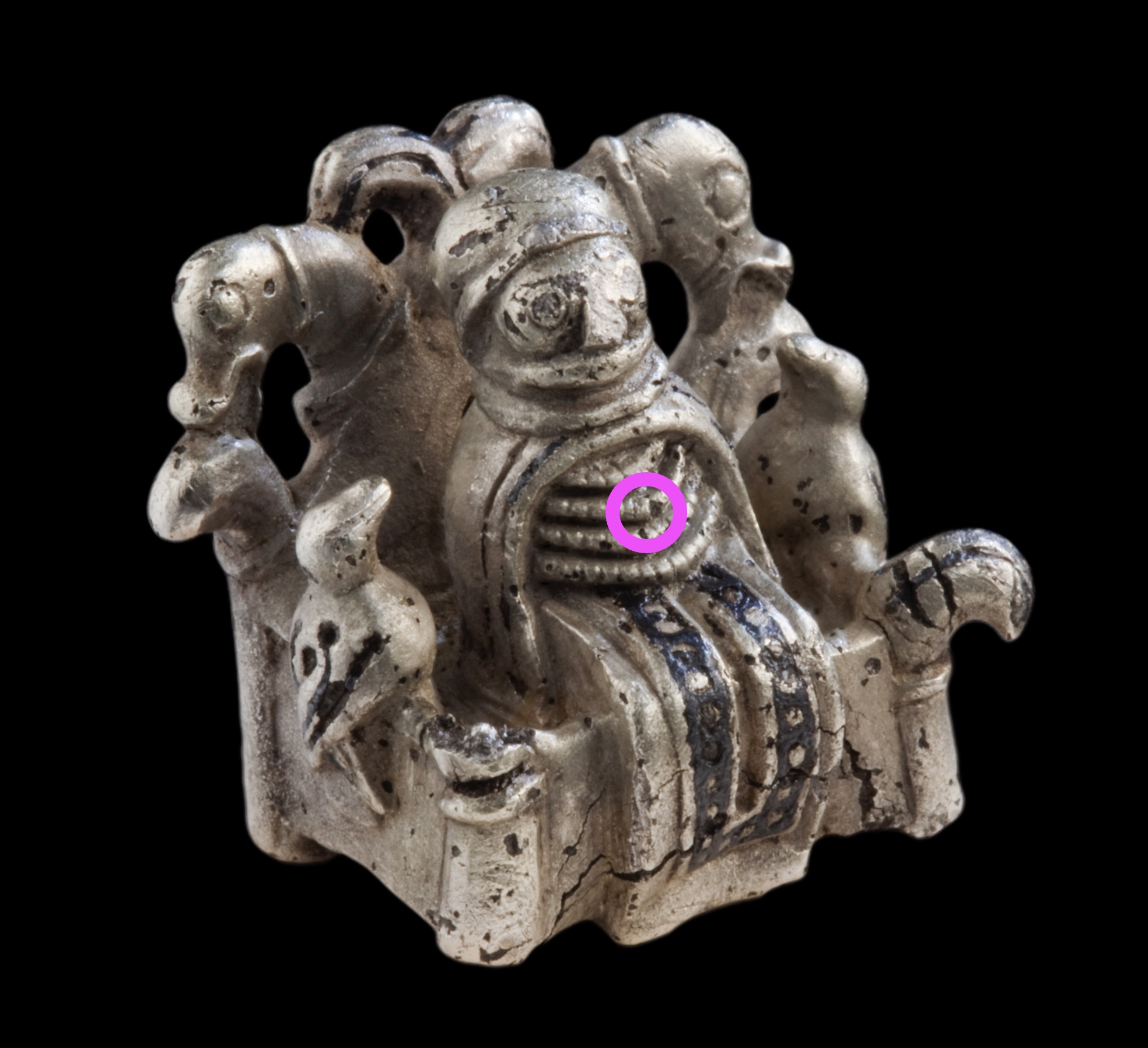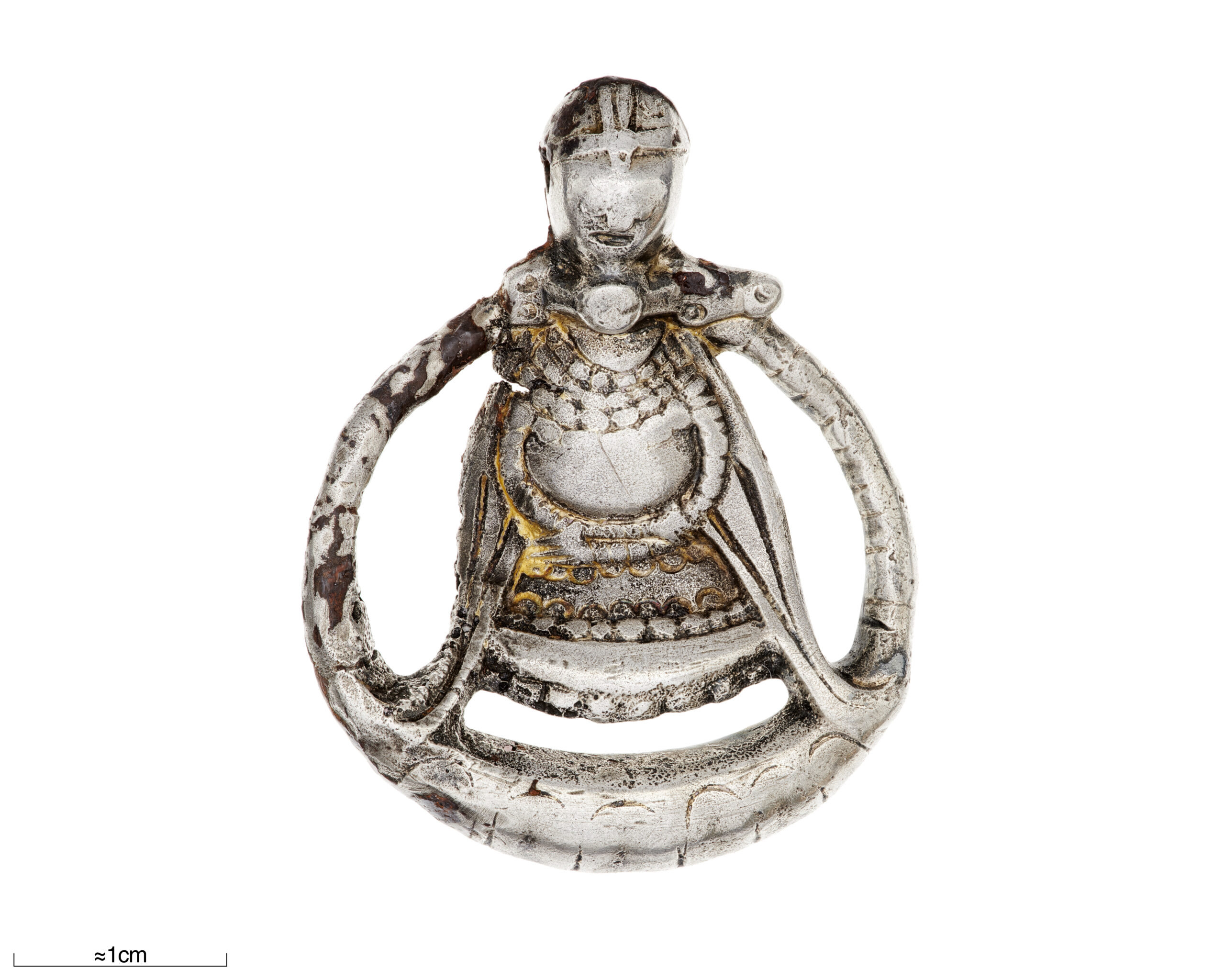The clothing on the Lejre figure is one of the elements most hotly debated by scholars. There is little doubt that the person is wearing a piece of clothing long enough to cover their legs and feet. It can also be relatively safely assumed that the clothes are meant to be ornate. Beyond this, interpretations become far more complicated.

Figure from Lejre, DK.
Silver with niello inlay.
1.8×2.0×1.3 cm.
(source: Wikimedia)
Just as there are few furniture remains from the Viking Age, clothing is another part of the Viking World that has mostly been lost to time. Fabrics that survive generally only do so in small fragments. As a result, it becomes necessary to look at other depictions of clothed human figures in Viking art as a starting point for interpretations of the clothing on the Lejre figure.
In comparison to some of the historical periods that immediately followed the Viking Age, “in the Early Bronze and Late Iron and Viking Ages, costumes in general looked different for males and females” (Mannering 2014, p. 79). Useful for interpretations of the Lejre figure specifically is that gendered-differences in costume tended to be in terms of their shape rather than their texture. The long clothing of the Lejre figure is therefore relevant to discussions of the human figure’s gender.

Slöinge Gold-foil Figure
(source: Mannering 2014)
The figure on the left is identified by Mannering as “a male clad in tunic and trousers,” while the figure on the right is “a female clad in blouse and skirt, and a cap on the head” (2014, p. 61).
While Christensen argues that the human figure is a male in long robes, Mannering believes it is far more plausible that the person is simply wearing a woman’s dress. Generally, even in depictions of male figures in long robes, their feet are still visible. Mannering believes clothing long enough to cover the feet of the figure genders the costume as female. This could indicate that the person is a female or possibly that it is a male figure dressed in female clothing.
Scholars who believe the human figure is a male are also more likely to argue that the head piece is a helmet. Mannering also questions this interpretation, believing it possible that the head piece is actually a sort of cap or bonnet that would have been worn by a female, like in the Slöinge gold-foil figure shown above.
Finally, there is the torso section. The grooved, patterned design of the torso is likely the element most unfamiliar to present day viewers. Mannering believes it most likely that the “the dotted lines represent bead chains,” which are also gendered as female (p. 83). The pattern is remarkably similar to the bead chains on a female figure from a pendant from Aska, Sweden.

Pendant from Aska, Sweden
(source: SHM)
Mannering, Ulla. 2014. “Man or Woman? — Perception of Gender through Costume.” Danish Journal of Archaeology 2, no. 1: 79–86.
« Previous | Home | Next »